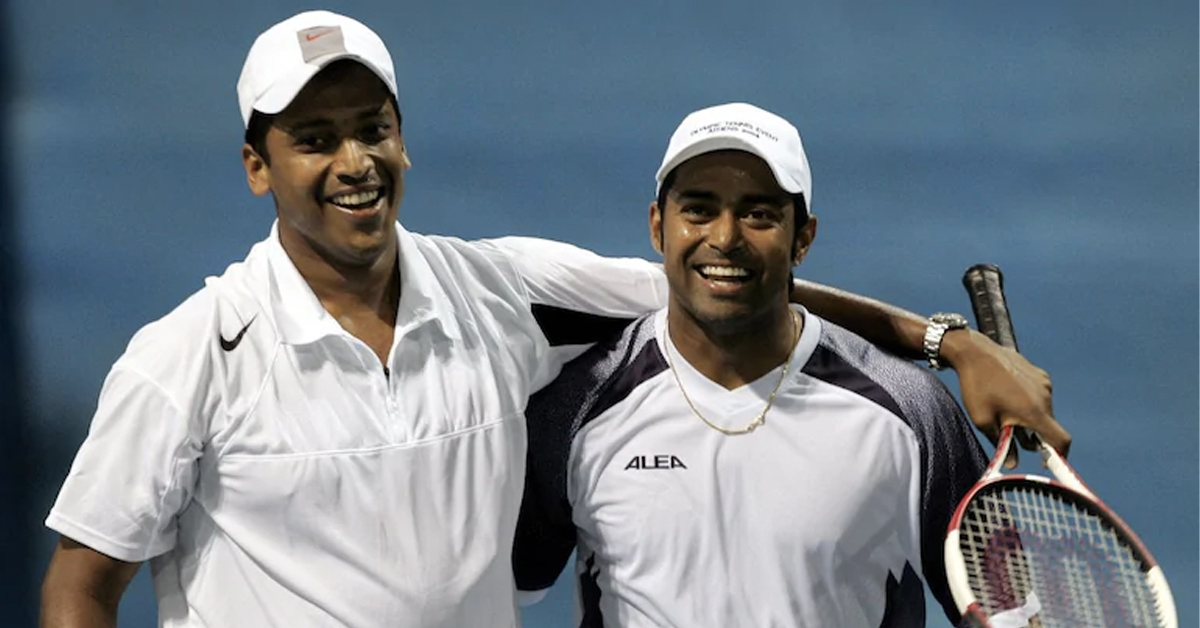Featured
How the Paes & Bhupathi friendship forged a new era in Indian tennis with Grand Slam success
There was a time when Paes-Bhupathi went unbeaten in the team competition from 1997 to 2010.

Tennis duo Leander Paes and Mahesh Bhupathi formed India's greatest men's doubles pairing at their peak when they reached the finals of all the four majors in 1999.
There was a time when Paes-Bhupathi went unbeaten in the team competition from 1997 to 2010, creating a record for the longest winning streak: 24 and still unbeaten. Wherever the tie, whoever the opposition, there was some respite that India would at least come back with one point. That is not a certainty anymore either.
Paes and Bhupathi were top players in the 1990s – Paes had won an Olympic medal in 1996 and Bhupathi had bagged the first Grand Slam by an Indian at the 1997 French Open.
But an all-Indian pair winning a Major together, and starting a season in such a dominant fashion was unprecedented. They became the first pair to reach the finals of all Grand Slams in a year in the Open era, winning French Open and Wimbledon as top seeds.
Dubbed as the 'Indian Exrpress', it was a gradual progression for them. They won six ATP tour titles in 1997, reached three Grand Slam semi-finals in 1998 and won two Grand Slam titles in 1999, by then Paes and Bhupathi became the poster boys of Indian sport, raking in the audience and the money.
Considered one of the most attuned men's doubles pairs in tennis, Paes's mettle at the net was well complimented by Bhupathi's excellent play from the baseline. Their friendship and camaraderie on-court enhanced their success and the three years from 1997 Chennai Open, where they won their first title together, was an unforgettable time for Indian tennis, rarely seen since.
In 1997, the duo reached their first Grand Slam semi-final at the US Open as 10th seeds, losing to eventual champions Yevgeny Kafelnikov and Daniel Vacek. From then on, they reached the semi-finals at three of the four Grand Slams in 1998, each time falling at the semi-final hurdle.
In 1999, they crossed that particular obstacle, reaching their first final together at the Australian Open as top seeds. But they couldn't get past Patrick Rafter and Jonas Bjorkman, losing 6–3, 4–6, 6–4, 6–7(10–12), 6–4 is a tough five-setter.
But that disappointment didn't last long as the top seeds reached the final again at the next Grand Slam, the French Open. And this time the finish line was crossed in style, the unseeded team of Goran Ivanisevic and Jeff Tarango, 6–2, 7–5.
At Wimbledon, they made it consecutive Majors beating Paul Haarhuis and Jared Palmer in a much closer match, winning 6-7(10), 6-3, 6-4, 7-6(4). They then reached the final of the US Open as well but went down to Alex O'Brien and Sebastien Lareau 7–6(9–7), 6–4.
Nevertheless, the record books were buzzing. Lee-Hesh were the first pair to reach four successive Grand Slam finals in one year since 1952 and were the world No 1 pair.
In 1999, they were the first pair to reach four successive Grand Slam finals in one year since 1952 and bagged the French Open and Wimbledon titles
At the end of the decade and millennium, they were the top-ranked men's doubles pair. However, they couldn't replicate the highs of the season in the 2000s.
Their next Grand Slam final together was the 2001 French Open, where they won their third and final Major together defeating Petr Pala and Pavel Vizner 7–6 (5), 6–3. But they were knocked out in the first round of the other three Slams and eventually parted ways mainly due to off-court issues.
Exactly a decade later, they would reunite for another memorable season that saw them start by winning the Chennai Open at home and win the Cincinnati Masters. They even reach the final of the 2011 Australian Open but the legendary pair of Mike and Bob Bryan beat them 6-3, 6-4.
They also came close to winning an Olympic medal twice. In Athens 2004, they lost in the bronze medal playoff 6-7, 6-4, 14-16 to Ivan Ljubicic and Mario Ancic after a tough fight while they lost in the quarterfinals to the eventual champions Federer and Wawrinka at Beijing 2008.
Also read: Flashback Friday: When 18-year-old Sania Mirza faced Serena Williams in grand slam match

